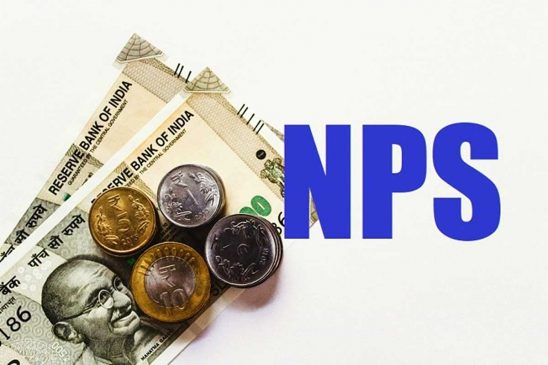The National Pension System (NPS) is designed as a voluntary retirement savings program, enabling subscribers to make predetermined contributions for planned savings, ensuring future financial security in the form of a pension. It represents a concerted effort to address the challenge of providing sufficient retirement income to every Indian citizen in a sustainable manner.
Upon regular exit from the NPS, subscribers have the option to utilise their accumulated pension wealth by purchasing a life annuity from a life insurance company approved by the Pension Fund Regulatory and Development Authority (PFRDA). Additionally, they may opt to withdraw a portion of their accumulated pension wealth as a lump sum. The PFRDA serves as the central agency responsible for the implementation and oversight of the NPS.
Read More: 1 vs 3 vs 5 Year FD Rates: Check How Much Return You Will Get From Major Banks
Who can open an NPS account under the All Citizen Model
A citizen of India, whether resident or non-resident, is subject to the following conditions:
Applicants should be between 18 – 70 years of age as of the date of submission of his/her application and should comply with the KYC norms prescribed.
Benefits of NPS Account
i) Low Cost:-
NPS is considered to be the world’s lowest-cost pension scheme. Administrative charges and fund management fees are also the lowest.
ii) Simple:-
All the applicant has to do is open an account with any one of the POPs being run through all Head post offices across India and get a Permanent Retirement Account Number(PRAN)
iii) Flexible:-
Applicants can choose his/her investment option and Pension Fund or select Auto Choice to get better returns.
iv) Portable:-
Applicants can operate an account from anywhere in the country and can pay contributions through any of the POP-SPs irrespective of the POP-SP branch with whom the applicant is registered, even if he/she changes his/her city, job, etc, and also make contributions through eNPS. The account can be shifted to any other sector like the government sector, or corporate model in case the subscriber gets employment.
Read More: Looking For A Personal Loan? A Step-By-Step Guide To Choosing The Perfect Scheme
Tax benefit to employees;
Individuals who are employed and contributing to NPS would enjoy tax benefits on their contributions as well as their employer’s contribution as under: –
Employee’s contribution –
Eligible for tax deduction up to 10% of Salary (Basic + DA) under Section 80 CCD(1) within the overall ceiling of Rs. 1.50 lakhs under Sec 80 CCE.
Employer’s contribution;
The employee is eligible for a tax deduction of up to 10% of Salary (Basic + DA) contributed by the employer under Sec 80 CCD(2) over and above the limit of Rs. 1.50 lakhs provided under Sec 80 CCE.
Tax benefit for self-employed:
Eligible for tax deduction up to 10 % of gross income under Sec 80 CCD (1) within the overall ceiling of Rs. 1.50 lakhs under Sec 80 CCE. Subscriber is allowed a deduction in addition to the deduction allowed under Sec. 80CCD(1) for additional contribution in his NPS account subject to a maximum investment of Rs 50,000 under sec. 80CCD 1(B)
Types of Accounts;
Tier -I Account –
The applicant shall contribute his/her savings for retirement into this condition; & restricted withdrawal account. This is the retirement account and applicants can claim tax benefits against the contributions made subject to the Income Tax rules in force.
Tier-II Account –
This is a voluntary savings facility. The applicant will be free to withdraw his/her savings from this account whenever he/she wishes. This is not a retirement account and applicants can’t claim any tax benefits against contributions to this account.
Contributions;
The subscriber can contribute the amount through cash, local cheque, demand draft, or Electronic Clearing System (ECS) at his/her chosen POP-SP. However, for cash transactions exceeding Rs.50000/- subscriber needs to submit a copy of the PAN card as per the Anti-Money Laundering (AML) rules.
Read More: Top 10 Banks Offering Lowest Interest On Personal Loan- Check Full List
Minimum Contributions (For Tier-I):-
- Minimum contribution at the time of account opening and for all subsequent transactions- Rs 500
- Minimum contribution per year – Rs 1,000 excluding charges and taxes
- Minimum number of contributions in a year – 01
Charges and Penalty for non-compliance of mandatory minimum contributions:-
- If the subscriber contributes less than Rs 1,000 in a year, his/her account will be frozen and the facilities provided by CRA such as an online view of the account, etc. will be restricted.
- To reactivate the account, the subscriber would have to pay the minimum contributions of Rs 500
- A frozen account shall be closed when the account value falls to zero.
Minimum Contributions (For Tier-II):-
Minimum contribution at the time of account opening – Rs 1000 and for all subsequent transactions a minimum amount per contribution of Rs 250
There is no minimum contribution requirement for the financial year and also there is no cap on maximum contribution.
Things to Consider:
- NPS has a lock-in period until retirement, with exceptions for specific situations.
- Returns are market-linked, so they can fluctuate.
- Carefully consider your risk tolerance when choosing an investment option.
The views and investment tips by experts in this News18.com report are their own and not those of the website or its management. Readers are advised to check with certified experts before making any investment decisions.



































